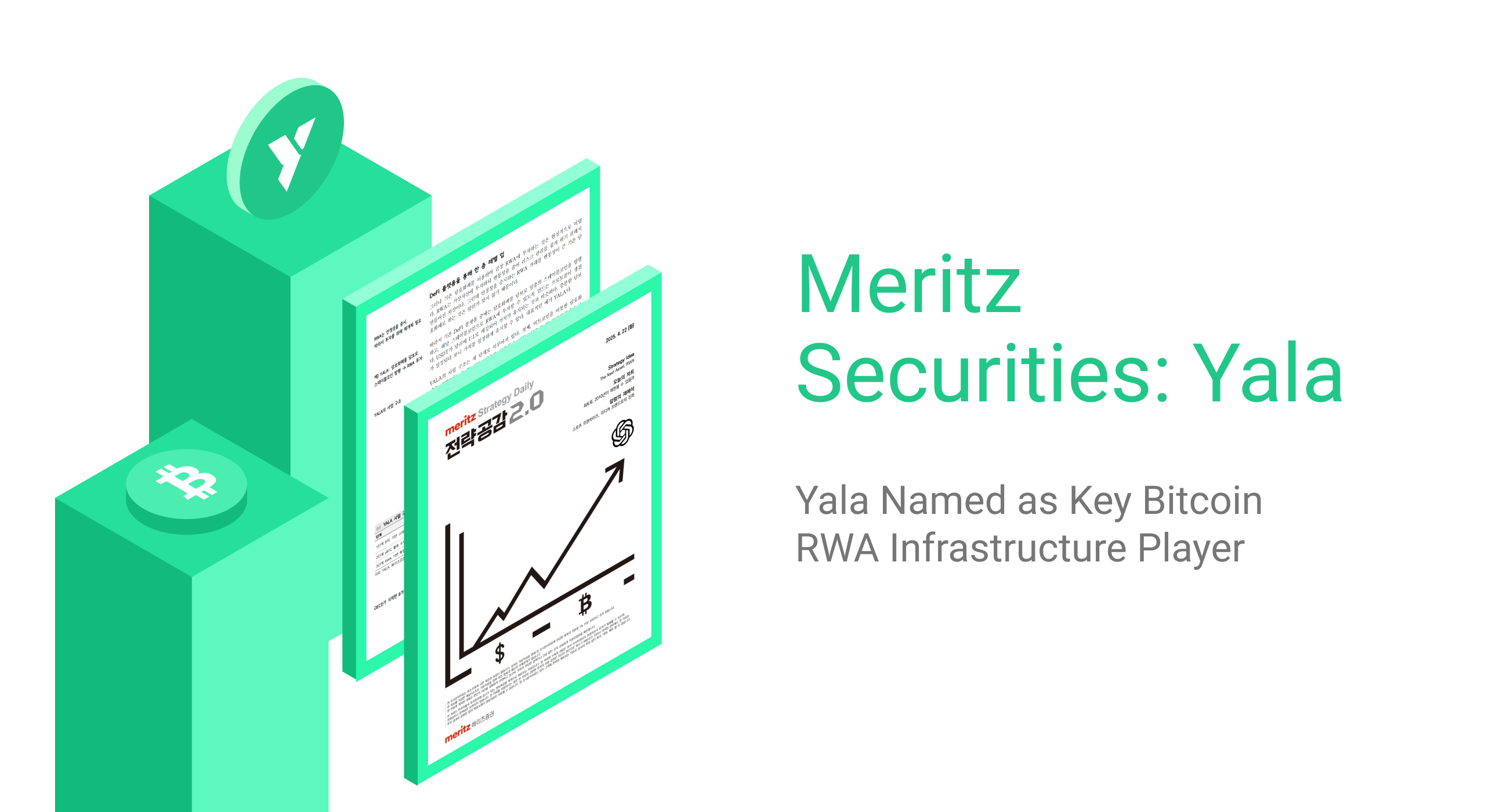Yala Featured in Meritz Securities: Naming Yala a Key Bitcoin-RWA Infrastructure Player
Meritz Securities has released a research report titled The Next Asset: RWA, naming Yala as a leading infrastructure player bridging Bitcoin and real-world assets (RWAs).

One of South Korea’s most respected financial institutions, Meritz Securities, released a research report titled The Next Asset: RWA, and Yala was named as a leading infrastructure player bridging Bitcoin and real-world assets (RWAs).
Meritz Securities is part of Meritz Financial Group, Korea’s second-largest financial group by market cap, with over USD 77.8 billion in AUM and a deep footprint in insurance, capital markets, and private equity. When a group like Meritz spotlights a DeFi protocol in a formal report, it means one thing: Bitcoin-native infrastructure is entering the institutional arena.
This was a recognition from traditional finance, for the system we’ve been quietly building.
What Meritz Saw in Yala
In a section dedicated to crypto-RWA infrastructure, Meritz highlighted Yala’s architecture as a scalable system for unlocking BTC yield without requiring users to sell their assets. The report described Yala’s structure as a three-layered protocol:
- YBTC – a DeFi-compatible Bitcoin asset
- Yala Vaults – BTC-based yield engines
- $YU – an overcollateralized stablecoin used to access RWA strategies and real-world spending
To Meritz, Yala is a pathway to scale and stability in crypto, combining Bitcoin’s monetary strength with the yield opportunities of tokenized real-world assets.
BTC, RWA, and What Comes Next
The RWA space is rapidly maturing. According to projections cited by Meritz, the RWA market is expected to grow from $600B in 2024 to $18.9T by 2030. That’s a 53% CAGR, and Bitcoin has been largely excluded from it.
Yala changes that. By minting $YU against BTC, users gain a direct link to tokenized assets like U.S. Treasuries and private credit—without giving up BTC ownership.
We call this structure RealYield: sustainable, cashflow-based returns from regulated assets, paid to Bitcoin holders through a fully decentralized system.
Why This Matters
Meritz serves public companies, institutional capital allocators, and global asset managers. When a firm of this caliber features Yala in its official research, it’s more than validation—it reflects a broader shift:
Bitcoin-native DeFi is entering the institutional conversation.
And Yala is the architecture they’re watching.
Designed for Bitcoin. Built for Real Yield.
From the start, Yala was built on a single principle:
Bitcoin doesn’t need to be sold to be useful.
Instead, it can be:
- Collateralized to mint $YU
- Deployed into regulated RWA vaults
- Spent your earned $YU interest via the Yeti Card or PayFi infrastructure
- Earned on through BTC-denominated yield strategies
What Meritz recognized in its latest report is what our users have already discovered:
Bitcoin is evolving into a productive, yield-bearing financial base layer, and Yala is making that future real.
Read the full report in Korean here: https://home.imeritz.com/include/resource/research/WorkFlow/20250421220530704K_02.pdf
Join the Yala Community
Yala is a native Bitcoin liquidity protocol that channels BTC into yield opportunities across DeFi and RWAs.
Bitcoin holders unlock capital through self-custodial, liquidation-free borrowing by minting $YU, a BTC-backed liquidity asset. In this process, they pay a stability fee directly to $YU depositors, effectively exchanging BTC-backed exposure for portable, capital-efficient liquidity and access to yield without giving up ownership.
Yala’s SmartVault module manages system risk and ensures efficient yield distribution.

